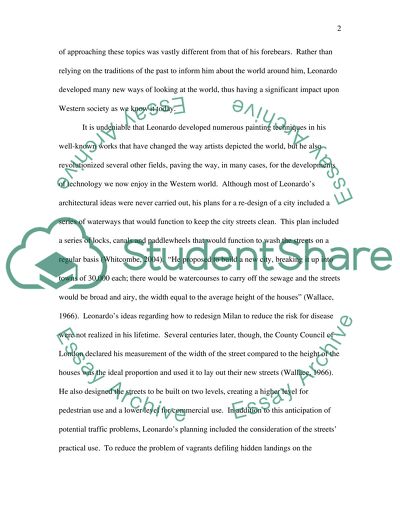Cite this document
(Leonardo Da Vinci's Influence on Western Civilization Essay Example | Topics and Well Written Essays - 1750 words, n.d.)
Leonardo Da Vinci's Influence on Western Civilization Essay Example | Topics and Well Written Essays - 1750 words. https://studentshare.org/culture/1546447-leonardo-da-vincis-lasting-influence-on-western-society
Leonardo Da Vinci's Influence on Western Civilization Essay Example | Topics and Well Written Essays - 1750 words. https://studentshare.org/culture/1546447-leonardo-da-vincis-lasting-influence-on-western-society
(Leonardo Da Vinci'S Influence on Western Civilization Essay Example | Topics and Well Written Essays - 1750 Words)
Leonardo Da Vinci'S Influence on Western Civilization Essay Example | Topics and Well Written Essays - 1750 Words. https://studentshare.org/culture/1546447-leonardo-da-vincis-lasting-influence-on-western-society.
Leonardo Da Vinci'S Influence on Western Civilization Essay Example | Topics and Well Written Essays - 1750 Words. https://studentshare.org/culture/1546447-leonardo-da-vincis-lasting-influence-on-western-society.
“Leonardo Da Vinci'S Influence on Western Civilization Essay Example | Topics and Well Written Essays - 1750 Words”. https://studentshare.org/culture/1546447-leonardo-da-vincis-lasting-influence-on-western-society.


